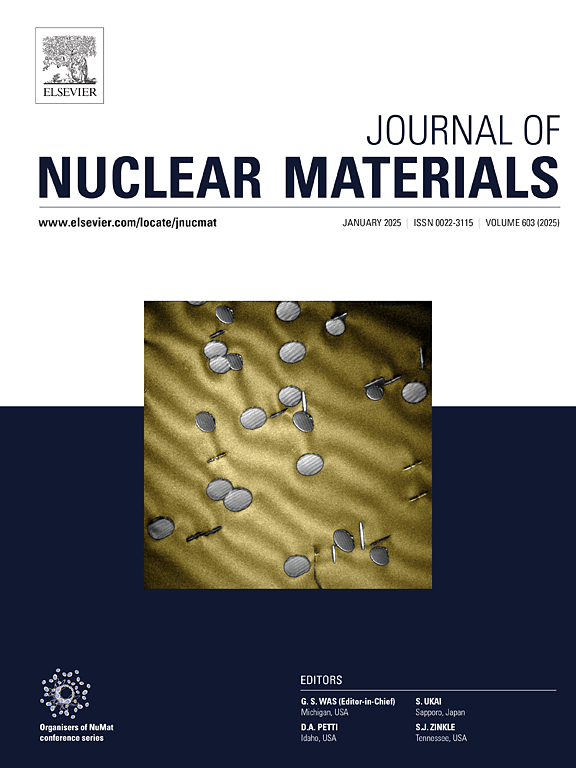Buffering the oxygen activity of uranium dioxide fuels using niobium and molybdenum as redox additives
IF 2.8
2区 工程技术
Q3 MATERIALS SCIENCE, MULTIDISCIPLINARY
引用次数: 0
Abstract
We demonstrate that it is possible to control the oxygen activity of a uranium oxide fuel by incorporating additives during the manufacturing process that have a strong redox activity. To this end, we have studied the macroscopic electrochemical properties of three polycrystalline uranium dioxide samples, the first containing both molybdenum and molybdenum dioxide, the second containing niobium dioxide and the last containing no additives other than impurities. During experiments, samples were subjected to reducing and subsequently oxidizing atmospheres with respect to the oxygen partial pressure at which the oxidized and reduced forms of the additives are in equilibrium. In situ monitoring of the electrochemical response of the samples reveals that the presence of redox couples involving either niobium or molybdenum significantly modifies the oxygen activity of a uranium dioxide solid. Scanning Electron Microscopy (SEM), Electron Back-Scatter Diffraction (EBSD) and Energy Dispersive X-ray analysis (EDX) prior to and following the high temperature measurements, confirm the in situ data: the final microstructure purports to show that the electrochemical activity is controlled by the Mo/MoO2 and the NbO2/Nb2O5 couples for the molybdenum and niobium containing samples respectively.
求助全文
约1分钟内获得全文
求助全文
来源期刊

Journal of Nuclear Materials
工程技术-材料科学:综合
CiteScore
5.70
自引率
25.80%
发文量
601
审稿时长
63 days
期刊介绍:
The Journal of Nuclear Materials publishes high quality papers in materials research for nuclear applications, primarily fission reactors, fusion reactors, and similar environments including radiation areas of charged particle accelerators. Both original research and critical review papers covering experimental, theoretical, and computational aspects of either fundamental or applied nature are welcome.
The breadth of the field is such that a wide range of processes and properties in the field of materials science and engineering is of interest to the readership, spanning atom-scale processes, microstructures, thermodynamics, mechanical properties, physical properties, and corrosion, for example.
Topics covered by JNM
Fission reactor materials, including fuels, cladding, core structures, pressure vessels, coolant interactions with materials, moderator and control components, fission product behavior.
Materials aspects of the entire fuel cycle.
Materials aspects of the actinides and their compounds.
Performance of nuclear waste materials; materials aspects of the immobilization of wastes.
Fusion reactor materials, including first walls, blankets, insulators and magnets.
Neutron and charged particle radiation effects in materials, including defects, transmutations, microstructures, phase changes and macroscopic properties.
Interaction of plasmas, ion beams, electron beams and electromagnetic radiation with materials relevant to nuclear systems.
 求助内容:
求助内容: 应助结果提醒方式:
应助结果提醒方式:


